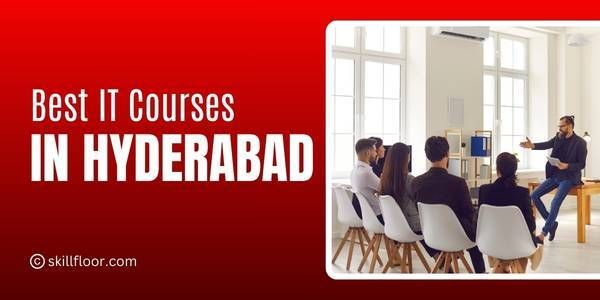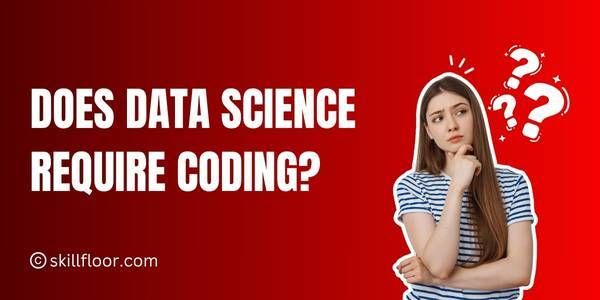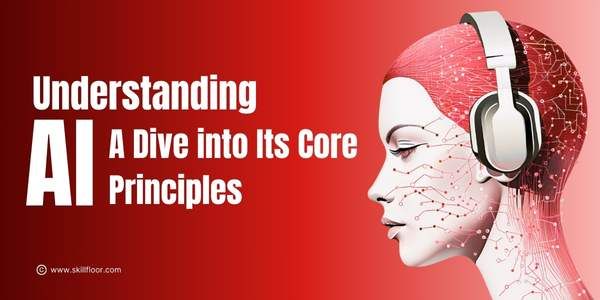80 SEO Interview Questions and Answers
Prepare for your SEO interview with the top questions and answers. From on-page to technical SEO, learn how to confidently tackle common SEO interview questions and land your dream job.

Search Engine Optimization (SEO) has become a fundamental aspect of digital marketing. As more businesses shift focus to the digital space, SEO professionals are in high demand. Whether you are just starting your career or looking to enhance your expertise, understanding SEO concepts and tools is crucial. This comprehensive guide provides answers to a wide range of SEO interview questions, divided into categories from basic to advanced, designed to prepare you for any SEO-related interview.
SEO plays a pivotal role in driving organic traffic to websites and improving the visibility of a brand on search engines like Google. From keyword research to on-page optimization and link-building strategies, SEO encompasses a wide range of activities.
If you're preparing for an SEO interview, having a solid understanding of SEO tools, techniques, and algorithms will give you a competitive advantage.
Table of Contents
-
Most Popular SEO Interview Questions
-
SEO Basic Interview Questions for Freshers
-
SEO Interview Questions and Answers for Experienced
-
SEO Technical Interview Questions
-
Local SEO Interview Questions and Answers
-
Social Media SEO Interview Questions and Answers
-
SEO Executive Interview Questions and Answers
Most Popular SEO Interview Questions
-
What is SEO, and why is it important for websites?
SEO (search engine optimization) is the process of optimizing a website to improve its ranking in search engine results pages (SERPs). It involves both on-page and off-page strategies such as keyword optimization, content creation, link building, and improving the website’s user experience (UX). SEO is crucial because it helps websites attract organic traffic, which leads to increased visibility, brand recognition, and ultimately, conversions.
-
What are the differences between on-page SEO and off-page SEO?
On-page SEO refers to all the activities done directly on the website to improve its ranking. This includes optimizing content, meta tags, headings, images, and URL structure. Off-page SEO involves actions taken outside of the website, such as building backlinks, social media marketing, and influencer outreach to boost the site's authority and visibility.
-
What is keyword research, and why is it important?
Keyword research is the process of identifying the terms and phrases that users type into search engines to find information related to a business. It’s important because understanding user intent helps businesses create content that resonates with their target audience, improving the chances of ranking higher in search results.
-
What are some important ranking factors for SEO?
Key ranking factors include content quality, relevant backlinks, mobile-friendliness, page speed, domain authority, and user experience (UX). Google also considers technical SEO factors such as crawlability, indexing, and security (HTTPS).
-
What is the significance of backlinks in SEO?
Backlinks are links from other websites that direct users to your site. They are essential because search engines use them as a signal of trust and authority. High-quality backlinks from reputable sites can significantly improve a site’s ranking.
-
What is a meta description?
A meta description is a summary (150-160 characters) of a webpage’s content, displayed below the title tag in search results. While it doesn’t directly affect rankings, a compelling meta description can increase click-through rates (CTR).
-
What are the common SEO tools you use and why?
Common SEO tools include
-
Google Analytics: For tracking website traffic and user behavior.
-
Google Search Console: For monitoring website performance and identifying errors.
-
SEMrush: For keyword research and competitive analysis.
-
Ahrefs: For backlink analysis and SEO auditing.
-
Moz: For keyword tracking and SEO insights.
-
What is the difference between white-hat and black-hat SEO?
White-hat SEO refers to ethical practices that follow search engine guidelines, such as creating quality content and earning natural backlinks. Black-hat SEO refers to unethical techniques that violate guidelines, such as keyword stuffing and cloaking. Black-hat techniques can lead to penalties and a decrease in rankings.
-
What are long-tail keywords, and why are they important?
Long-tail keywords are longer, more specific phrases that often have lower search volume but higher conversion rates. They are important because they indicate more precise user intent, allowing businesses to attract highly targeted traffic.
-
How do you optimize a website for mobile SEO?
Mobile optimization includes ensuring that the website design is responsive, improving page speed, using legible fonts and clickable buttons, and ensuring that content is easily accessible on smaller screens. Google uses mobile-first indexing, meaning mobile optimization is critical for SEO.
-
What is the role of structured data (schema markup) in SEO?
Structured data (schema markup) is code added to a website to help search engines understand the content more clearly. It can lead to rich snippets, which enhance visibility in search results by providing additional information. such as reviews, prices, and events.
-
What is a sitemap, and why is it important for SEO?
A sitemap is a file that lists all the pages on a website, helping search engines crawl and index them more efficiently. It ensures that all the important pages on a website are discovered and indexed properly.
-
What is a 301 redirect?
A 301 redirect is a permanent redirect from one URL to another. It’s used when a page has been moved to a new location, preserving the SEO value of the original page and ensuring that both users and search engines are directed to the new URL.
-
How does Google’s algorithm affect SEO?
Google’s algorithm determines the ranking of websites based on factors like content relevance, backlinks, and user experience. SEO professionals must align their strategies with Google’s algorithm updates (e.g., Panda, Penguin) to maintain or improve rankings.
-
What is the significance of CTR (click-through rate) in SEO?
CTR is the percentage of people who click on a search result after seeing it. A high CTR indicates that a website’s title and meta description are engaging and relevant, which can improve rankings indirectly.
SEO Basic Interview Questions for Freshers
-
What is the role of a keyword in SEO?
Keywords are the terms that users enter into search engines. Optimizing content around relevant keywords helps search engines understand what the page is about, allowing it to rank for those queries.
-
Can you explain what a 404 error is and how to resolve it?
A 404 error occurs when a user tries to access a webpage that no longer exists. To resolve it, you can either redirect the URL to an active page (301 redirect) or update the internal links to point to the correct page.
-
What is bounce rate, and how does it affect SEO?
Bounce rate refers to the percentage of visitors who leave a website after viewing only one page. A high bounce rate can negatively affect SEO, as it may indicate poor user experience or irrelevant content.
-
What are the different types of keywords?
Keywords can be categorized into
-
Short-tail keywords: Broad search terms with high search volume (e.g., "digital marketing").
-
Long-tail keywords: More specific and lower search volume phrases (e.g., "best digital marketing course in Pune").
-
LSI (Latent Semantic Indexing) keywords: Related keywords that help search engines understand context.
-
How do you optimize an image for SEO?
To optimize images for SEO, ensure they are the correct size (for faster loading), use descriptive file names, add alt text, and choose the appropriate image format (JPEG for photos, PNG for graphics).
-
What is an anchor text, and how does it help in SEO?
Anchor text is the clickable text in a hyperlink. Optimizing anchor text with relevant keywords helps search engines understand the context of the linked page and can improve the page’s ranking.
-
How do you find the right keywords for a website?
Keyword research can be done using tools like Google Keyword Planner, SEMrush, or Ahrefs. Start by brainstorming topics related to your business, then find keywords with high search volume and low competition.
-
What are the different types of search engines?
The main types of search engines include
-
General search engines (e.g., Google, Bing)
-
Vertical search engines (e.g., YouTube for videos, Amazon for products)
-
Local search engines (e.g., Yelp, Google My Business)
-
Specialized search engines (e.g., DuckDuckGo)
-
How do search engines work to rank web pages?
Search engines crawl websites, index content, and rank it based on factors like relevance, quality of content, backlinks, user experience, and site authority.
-
What is the role of content in SEO?
Content is at the heart of SEO. High-quality, relevant, and engaging content helps websites rank better. It should be optimized with keywords, well-structured, and valuable to the target audience.
-
What is the difference between a do-follow and a no-follow link?
A do-follow link passes SEO value (link juice) from one site to another, while a no-follow link does not. No-follow links are typically used for user-generated content or paid links to avoid passing authority.
-
What are SEO-friendly URLs?
SEO-friendly URLs are short, descriptive, and contain relevant keywords. They are easy to read and understand for both users and search engines.
-
What is the importance of internal linking in SEO?
Internal linking helps search engines understand the structure of a website and pass link equity to important pages. It also improves user navigation by providing easy access to related content.
-
What is a search engine index?
A search engine index is a database that contains information about all the webpages that search engines have crawled. Websites need to be indexed to appear in search engine results.
-
What are SEO analytics, and why are they important?
SEO analytics track and measure key performance indicators (KPIs) such as traffic, bounce rate, keyword rankings, and conversion rates. They help assess the effectiveness of SEO strategies and identify areas for improvement.
SEO Interview Questions and Answers for Experienced
-
Explain how SEO is impacted by Google’s Core Web Vitals.
Core Web Vitals measure user experience factors such as page loading speed, interactivity, and visual stability. Google now includes these metrics as ranking factors, so optimizing for Core Web Vitals can improve rankings.
-
What is link building, and what are some white-hat link-building strategies?
Link building is the process of acquiring backlinks to improve site authority. White-hat strategies include guest blogging, creating high-quality content, influencer outreach, and leveraging social media for organic sharing.
-
How do you deal with duplicate content issues?
Duplicate content can confuse search engines. Solutions include using canonical tags to indicate the preferred version of content, creating unique content, and using 301 redirects to point to the original content.
-
What is the role of a content delivery network (CDN) in SEO?
A CDN helps reduce website load times by storing copies of content on servers worldwide. Faster page load times improve user experience and are a ranking factor for SEO.
-
Explain the significance of E-A-T (Expertise, Authoritativeness, Trustworthiness) in SEO.
E-A-T is a measure of a website’s credibility, especially for YMYL (Your Money Your Life) pages. Google favors websites with high levels of expertise, authoritativeness, and trustworthiness, particularly in sensitive areas like health and finance.
-
What is Google’s RankBrain, and how does it affect SEO?
RankBrain is an AI-powered algorithm that helps Google interpret search queries. It looks beyond keywords to focus on user intent, which means creating content that answers user queries is critical for SEO.
-
How does site architecture affect SEO?
A well-structured site helps search engines crawl and index pages efficiently. A clear hierarchy, logical URL structure, and internal linking make it easier for search engines to understand the site’s content and improve rankings.
-
How would you optimize for voice search?
Voice search optimization involves using conversational keywords, focusing on long-tail keywords, ensuring content is mobile-friendly, and providing direct answers to questions. Structured data can also help.
-
What is a 301 redirect, and when should it be used?
A 301 redirect is a permanent redirect used when a webpage is moved to a new location. It helps preserve the SEO value of the original page and ensures both users and search engines are directed to the new URL.
-
Explain the importance of schema markup in SEO.
Schema markup is code added to a webpage to help search engines understand its content better. It can enhance search results with rich snippets, making the page more attractive to users and improving CTR.
-
What are Google’s featured snippets, and how can they be targeted?
Featured snippets are highlighted search results that provide direct answers to questions. To target them, create content that directly answers common questions in a concise format and use headers and lists.
-
What is the importance of HTTPS in SEO?
HTTPS is a secure version of HTTP that encrypts data exchanged between users and websites. Google uses HTTPS as a ranking signal, and sites without it may experience lower rankings and a lack of user trust.
-
What is the difference between a sitemap and a robots.txt file?
A sitemap is a file that lists all the pages of a website, helping search engines crawl and index them. A robots.txt file is used to give instructions to search engines about which pages they should or shouldn’t crawl.
-
What are the factors affecting local SEO rankings?
Local SEO rankings are influenced by factors such as Google My Business optimization, NAP (Name, Address, Phone Number) consistency, local citations, customer reviews, and localized content.
-
How does mobile optimization affect SEO?
Mobile optimization is essential because Google uses mobile-first indexing. Websites that are not optimized for mobile devices will suffer in rankings, as user experience on mobile is a critical ranking factor.
SEO Technical Interview Questions
Technical SEO focuses on the behind-the-scenes factors that influence search rankings.
1. What is crawlability, and how can you improve it?
Crawlability refers to the ability of search engines to access and index a website’s content. It can be improved by optimizing robots.txt, creating an XML sitemap, and fixing broken links.
2. What is a robots.txt file?
A robots.txt file is a text file that tells search engine crawlers which pages to crawl and index on a website. It helps prevent search engines from crawling irrelevant pages.
3. How do you optimize a website for mobile SEO?
Mobile SEO involves creating a responsive web design, improving page load times, and ensuring that all content and functionality are accessible on mobile devices.
4. What are structured data and schema markup used for?
Structured data and schema markup help search engines understand a webpage’s content better and improve the display of results, including rich snippets.
5. How do you handle a site migration from HTTP to HTTPS?
A site migration to HTTPS involves setting up 301 redirects, updating internal links, and ensuring all external links point to the new secure URLs.
6. How can you improve website load time?
Optimizing website load time includes compressing images, using a content delivery network (CDN), reducing server response time, and enabling caching.
7. What is a crawl budget, and why is it important?
Crawl budget is the number of pages a search engine bot will crawl on a website during a given period. It’s important because optimizing your crawl budget ensures search engines efficiently index the most important pages.
8. What is an AMP (Accelerated Mobile Pages)?
AMP is an open-source framework designed to make mobile web pages load faster. It improves the user experience on mobile and can positively impact SEO rankings.
9. Explain the term "redirect chain" and how it affects SEO.
A redirect chain occurs when a URL redirects to another URL, which then redirects to another URL. It can slow down website performance and reduce crawl efficiency, negatively impacting SEO.
10. What is HTTPS, and how does it impact SEO?
HTTPS (Hypertext Transfer Protocol Secure) encrypts data between a user’s browser and a website. Google uses HTTPS as a ranking signal, so switching to HTTPS can improve SEO performance.
Local SEO Interview Questions and Answers
Local SEO focuses on optimizing a website to rank higher for location-based searches.
1. What is local SEO, and why is it important?
Local SEO is the process of optimizing your website and online presence for location-based searches. It’s important because it helps businesses attract local customers who are searching for products or services in their area.
2. What is Google My Business (GMB)?
Google My Business is a free tool that allows businesses to manage their online presence on Google, including their Google Search and Maps listings. Optimizing GMB helps businesses show up in local searches.
3. What are NAP citations?
NAP stands for Name, Address, and Phone Number. NAP citations are mentions of a business’s information on other websites. Consistent NAP citations help improve local SEO rankings.
4. How do you optimize a business for local searches?
Optimize GMB, create location-specific content, build local citations, and encourage positive reviews to improve visibility in local search results.
5. What are local backlinks, and why are they important?
Local backlinks are links from other local businesses or local news outlets. They improve local SEO by boosting the website’s authority in its geographical area.
6. How do online reviews impact local SEO?
Online reviews are crucial for local SEO because they build trust, improve rankings, and influence consumer decisions. Google values positive reviews as a ranking factor.
7. What is a local pack, and how can you rank in it?
The local pack refers to the map results shown on Google’s SERPs for location-based searches. Ranking in the local pack involves optimizing GMB, getting local reviews, and improving local relevance.
8. How do you optimize a local landing page?
Include location-specific keywords, add local content, embed Google Maps, and ensure the NAP is consistent to optimize a local landing page.
9. What is the difference between local SEO and traditional SEO?
Local SEO targets location-based searches and emphasizes local backlinks, reviews, and citations, while traditional SEO focuses on broader search results without geographical limitations.
10. How can mobile optimization help in local SEO?
Most local searches happen on mobile devices. Optimizing your website for mobile ensures that it loads quickly and provides a good user experience, which helps improve local rankings.
Social Media SEO Interview Questions and Answers
Social media plays a growing role in SEO by influencing rankings and driving traffic.
1. How does social media impact SEO?
Social media signals such as likes, shares, and comments can indirectly influence SEO by driving traffic, increasing brand visibility, and generating backlinks.
2. What is social media SEO?
Social media SEO refers to optimizing social media profiles and content to improve visibility on social platforms and contribute to SEO performance.
3. How do you optimize social media profiles for SEO?
Use relevant keywords in the bio, posts, and hashtags; add backlinks to your website; and ensure your profile is complete and up-to-date.
4. What role do social signals play in search rankings?
Social signals, such as shares, likes, and comments, show search engines that content is valuable, leading to better ranking and more visibility.
5. How do you measure social media success for SEO?
Measure metrics like engagement rates, referral traffic to your website, follower growth, and social mentions to evaluate social media's impact on SEO.
6. Can social media replace traditional SEO?
Social media cannot replace SEO, but can complement it by driving traffic, increasing brand awareness, and providing content that can rank in search engines.
7. How do you create shareable content on social media?
Focus on creating engaging, informative, and visually appealing content that resonates with your target audience, encouraging them to share.
8. How does social media help with local SEO?
Social media helps local SEO by increasing visibility within a local audience, driving local traffic, and improving local citations and reviews.
9. What are the best social media platforms for improving SEO?
Platforms like Facebook, Instagram, LinkedIn, and Twitter are great for increasing brand visibility, sharing content, and generating traffic to your website.
10. How do you handle negative social media signals in SEO?
Monitor social media feedback, address negative comments quickly, and ensure your brand maintains a positive reputation to prevent any negative impact on SEO.
SEO Executive Interview Questions and Answers
1. What is SEO, and why is it important for a website?
SEO (search engine optimization) is the practice of optimizing a website to improve its visibility in search engine results pages (SERPs). By improving a website’s ranking, SEO drives organic traffic, increases brand visibility, and ultimately leads to higher conversion rates and ROI. It’s important because most users rely on search engines to find information, and higher rankings increase the likelihood of attracting targeted traffic.
2. What are the key factors that influence SEO?
The key factors that influence SEO are
-
On-Page SEO: Title tags, meta descriptions, URL structure, headings, keyword optimization, content quality, and internal linking.
-
Off-Page SEO: Backlinks, social media signals, and brand mentions.
-
Technical SEO: Site speed, mobile-friendliness, crawlability, secure HTTPS connections, and structured data.
-
User Experience (UX): Bounce rates, time on page, page load speed, and navigability.
3. What is the difference between organic and paid search results?
-
Organic Search Results: These are the unpaid listings on search engine result pages (SERPs) that appear due to SEO efforts. They are determined by the search engine’s algorithms based on relevance and quality.
-
Paid Search Results: These are advertisements that appear on SERPs when a business pays for them through platforms like Google Ads. They are marked as ads and are placed based on keyword bidding.
4. How would you optimize a website’s content for SEO?
To optimize content for SEO:
-
Keyword Research: Conduct thorough keyword research to find high-volume, relevant keywords that match user intent.
-
Keyword Placement: Use the target keywords naturally in the title, headings, meta description, URL, and throughout the content.
-
Content Quality: Ensure content is valuable, informative, and provides answers to the user’s query.
-
Readability: Use short paragraphs, bullet points, and proper formatting to improve user experience.
-
Internal Linking: Add relevant internal links to keep users engaged and improve site structure.
-
Multimedia Optimization: Optimize images, videos, and other media for faster loading times and accessibility.
5. What is a 301 redirect, and when would you use it?
A 301 redirect is a permanent redirection from one URL to another. It is used when a webpage has moved to a new URL permanently, and you want to ensure that the link equity and traffic from the old page are transferred to the new one. This helps avoid broken links and maintain SEO rankings.
6. What tools do you use for keyword research, and why?
Some popular tools for keyword research are
-
Google Keyword Planner: A free tool from Google that helps find keyword ideas and estimates search volume.
-
SEMrush: Offers comprehensive keyword research, competitive analysis, and tracking.
-
Ahrefs: Great for keyword analysis and backlink research.
-
Ubersuggest: A free and user-friendly tool for keyword discovery and competitive analysis.
-
Moz Keyword Explorer: Provides keyword suggestions and SERP analysis.
These tools help identify high-ranking keywords, understand competition, and develop an effective keyword strategy.
7. Explain what "bounce rate" is and how it can affect SEO.
Bounce rate refers to the percentage of visitors who land on a website and leave without navigating to any other pages. A high bounce rate can signal poor user experience, irrelevant content, or slow page load times. This can negatively impact SEO, as search engines may interpret it as a sign that the site does not meet user expectations. Reducing bounce rates involves improving page content, site navigation, and overall UX.
8. What is the importance of backlinks in SEO?
Backlinks are links from external websites that point to your site. They are a critical ranking factor because they act as “votes of confidence” for your content. Search engines view backlinks from reputable sites as an indication that your content is trustworthy and valuable. High-quality backlinks from authoritative websites improve your domain authority and increase rankings in SERPs.
9. How do you improve the loading speed of a website for SEO
To improve website loading speed:
-
Image Optimization: Compress images without compromising quality.
-
Minify CSS, HTML, and JavaScript: Remove unnecessary spaces and comments to reduce file sizes.
-
Leverage Browser Caching: Allow browsers to cache resources to avoid reloading them each time a user visits.
-
Use a Content Delivery Network (CDN): Distribute your content across multiple servers to reduce latency.
-
Use Faster Hosting: Choose a hosting provider with good performance and fast server response times.
Page speed is a ranking factor for Google, and faster websites provide a better user experience.
10. What is the difference between a dofollow and a nofollow link?
-
Dofollow Links: These links pass “link juice” or authority from one website to another, influencing search engine rankings.
-
Nofollow Links: These links don’t pass link equity and don’t directly affect SEO rankings. They are used for content like comments or paid ads, where you don’t want to pass authority.
While dofollow links contribute to SEO, nofollow links are still important for driving traffic and building a natural backlink profile.
Note: Please personalise and adjust the answers based on your own experience and knowledge for a more authentic response.
Preparing for SEO interviews is not just about memorizing answers. It's about understanding how search engines work, staying updated with changes, and thinking critically about strategies. Interviewers are looking for people who can adapt, solve problems, and show real-world knowledge. Whether you are a fresher or experienced, focus on the basics first, then bring in your own insights during the conversation. That’s what makes you stand out in an SEO interview.



























































